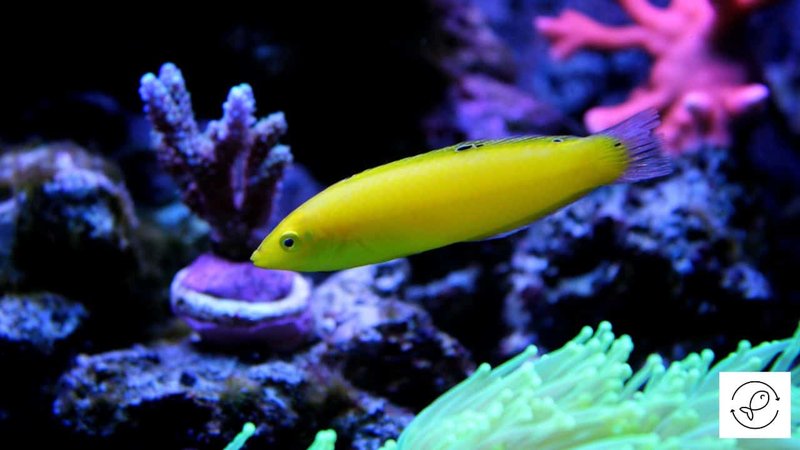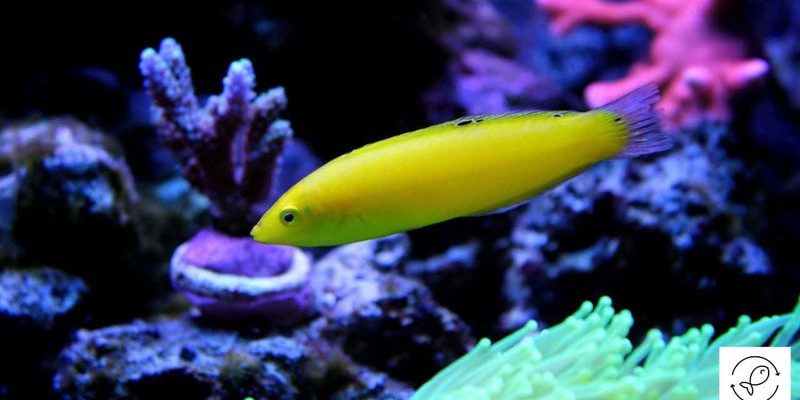
Just like not everyone gets along at a party, some fish are simply cooler to each other than others. Understanding the tank mate compatibility of wrasses can help you create a peaceful underwater community. So, grab a coffee and let’s dive into what you need to know about housing your wrasse with other fish!
What Are Wrasses?
Wrasses belong to the family Labridae, a diverse group of fish that thrive primarily in coral reefs. You might recognize them by their striking colors—think bright greens, blues, yellows, and even pinks. Wrasses are known for their active and curious nature, often darting through the water or exploring every nook and cranny in the tank.
These fish are also somewhat unique in their behaviors. Many wrasses are carnivorous, feeding on small invertebrates like mollusks and crustaceans. This strong appetite means they might not be the best roommates for smaller or more delicate species. So, before adding a wrasse to your aquarium, it’s vital to consider not just their personalities, but also their dietary needs and compatibility with other fish.
Tank Size Matters
Before we get into specific compatibility, let’s talk about space. The size of your aquarium plays a significant role in how well a wrasse will coexist with other fish. Wrasses need room to swim and explore—think of it as giving them a backyard to roam. A cramped tank can lead to stress, which might increase aggression between tank mates.
For most species of wrasse, a minimum of 50 gallons is recommended. This gives them enough space to establish their territory. If you’re planning to add more fish, a larger tank is even better. With more room, fish can avoid each other and deal with territorial tendencies more easily.
Choosing Compatible Tank Mates
When it comes to choosing companions for your wrasse, you’ll want to look for fish that share their temperament and keep their size in mind. Here are some guidelines:
- Temperament: Look for fish that are similarly active and robust. Fish like clownfish, gobies, or damsels can work well.
- Size: Keep in mind that very small fish can become snacks. Make sure potential tank mates are not only similar in temperament but also in size.
- Behavior: Since wrasses can be aggressive during feeding times, avoid slow-moving or timid fish that might get bullied away from food.
Also, consider adding wrasses of the same species or other wrasse types, as they often get along. Just make sure your tank is sizable enough to accommodate multiple wrasses without triggering aggression over territory.
Fish to Avoid
Not all fish make good companions for wrasses. Here are some to steer clear of:
- Small Invertebrates: Shrimp and smaller fish are at risk. Wrasses may see them as food rather than friends.
- Docile Fish: Fish like gentle tangs or peaceful bettas could face challenges. Wrasses can be assertive when claiming their space.
- Other Wrasses (in small tanks): While they can live together, more aggressive wrasses may clash in smaller settings.
It’s a balancing act, really. Just like some people clash at dinner parties, some fish are bound to disagree. Keeping an eye on compatibility can help smooth things out and create a harmonious environment.
Feeding Your Wrasse and Their Tank Mates
Feeding time can also be a crucial period for tank dynamics. Since wrasses are carnivorous, they thrive on a diet rich in protein. Here’s how to ensure everyone gets fed without drama:
1. Variety is Key: Offer a mix of flakes, pellets, and frozen food. This ensures that your wrasse is well-fed and leaves others’ food intact.
2. Separate Feeding Zones: If you notice your wrasse getting a little too aggressive during feeding, try using separate feeding zones. This can help to minimize tension.
3. Regular Feeding Schedule: Stick to a consistent schedule. Fish learn routines, and knowing when dinner is served can help ease anxiety and competition during feeding time.
Keeping your tank well-fed can reduce the likelihood of aggression and territorial disputes. Happy fish often means a happier tank overall.
The Impact of Tank Environment
The environment you create in your aquarium can significantly affect how well your wrasse interacts with other fish. Here are a few tips to foster a peaceful tank:
– Provide Hiding Spots: Use rocks, plants, and ornaments. Wrasses like to explore, and having places to hide can minimize stress when they need it.
– Create Open Swimming Spaces: While hiding spots are essential, make sure there are open areas for swimming. This allows fish to interact without feeling cornered.
– Maintain Water Quality: Regular water changes and monitoring parameters keep your fish healthy and happy. Fish in poor conditions can become stressed and aggressive.
Environmental factors often contribute to fish behavior, so taking care of the habitat can lead to better interactions among your aquatic friends.
In the colorful world of aquariums, introducing a wrasse can be a fantastic adventure, but it’s essential to consider their tank mate compatibility. By choosing the right companions, maintaining a suitable environment, and providing a balanced diet, you can create a thriving aquatic community. Remember, every fish has its personality, and just like in life, some get along beautifully while others might not.
Ultimately, patience and observation will be your best tools. As you set up your dream aquarium, think of it as crafting a vibrant underwater community where every fish has its place. Enjoy the process, and happy fishkeeping!

